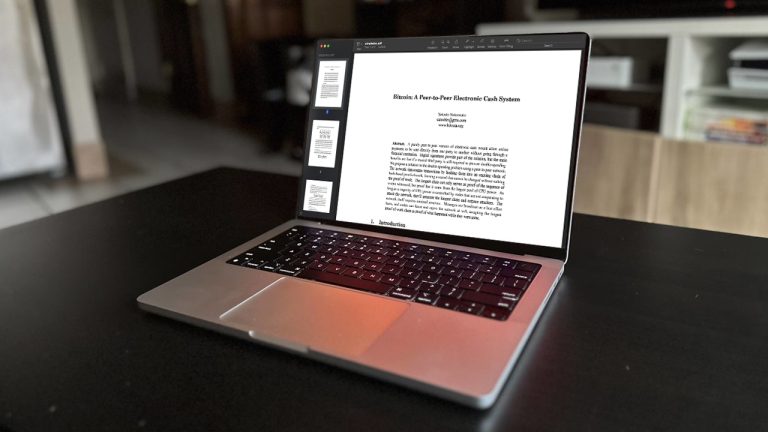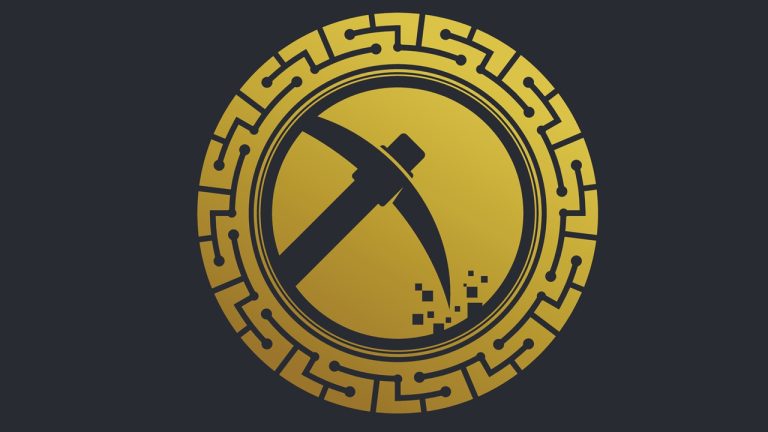
Quantum computing is the next most significant disruptive technological leap and its rapid evolution and funding will soon make it a reality.
Quantum computing may seem like science fiction, but it may come sooner than expected.
On Jan. 11, 2024, the World Economic Forum identified artificial intelligence (AI) and quantum computing as emerging threats in a report exploring how quantum computing could threaten the existing tech landscape.
While computer scientists and developers agree that quantum computing will still take some years to develop, research in the field is very active.

The coalition includes Google sibling company SandboxAQ and the University of Waterloo.
IBM Quantum and Microsoft have formed a coalition to tackle post-quantum cryptography alongside not-for-profit research tank MITRE, U.K.-based cryptography firm PQShield, Google sibling company SandboxAQ, and the University of Waterloo.
We’re proud to be a part of a new community of cybersecurity organizations to accelerate adoption of post-quantum cryptography in commercial & open-source technologies.
— University of Waterloo (@UWaterloo) September 26, 2023
Learn more about the #PQC Coalition.
https://t.co/pSrFX1qPPB | #QWC2023 #UWaterloo pic.twitter.com/vXG6CilQVx
Post-quantum cryptography (PQC) addresses the potential threat posed by quantum computers of the future. Current cryptography schemes rely on mathematical problems to stymie decryption attempts.
Cracking or bypassing such encryption with a classical computer would be close to impossible. Some experts estimate that it would take a binary computer system roughly 300 trillion years to break a 1,024-bit or 2,048-bit RSA key.
RSA, named for the computer scientists who first discussed it, is largely considered the standard for encryption.
Theoretically speaking, however, a quantum computer with sufficient hardware and architecture should be able to break RSA and similar encryption schemes within a matter of weeks, days, or even hours.
According to a press release from MITRE:
“Preparing for a PQC transition includes developing standards for the algorithms; creating secure, reliable, and efficient implementations of those algorithms; and integrating the new post-quantum algorithms into cryptographic libraries and protocols.”
Technologies such as blockchain and cryptocurrency, which rely on mathematical encryption, could be particularly vulnerable to decryption attacks by the theoretical quantum computers of the future. However it's currently unclear how long it could be before such threats could come to fruition.
Related: Scientists warn the ‘quantum revolution’ may stagnate economic growth
One study, conducted in 2022, determined that it would take a quantum computer with 300 million qubits (a very generalized measure of the potential processing power of a quantum system) to crack the Bitcoin blockchain fast enough to do any damage. By comparison, today’s most advanced quantum computers average a little over 100 qubits.
However, per the architecture described in that paper, it’s possible that more advanced qubit arrangements, chipsets, and optimization algorithms could significantly change the calculus involved and drop the theoretical 300-million-qubit requirement exponentially. For this reason, the global technology community is turning to quantum-safe encryption.
The National Institute of Standards and Technology chose four proposed post-quantum encryption algorithms in 2022, CRYSTALS-Kyber, CRYSTALS-Dilithium, SPHINCS+, and Falcon as candidates for a PQC-safe encryption standard.
On Aug. 24, 2023, NIST announced that three of the algorithms had been accepted for standardization with the fourth, Falcon, expected to follow suit in 2024.
Now that the algorithms have been accepted and (mostly) standardized, the coalition is set to begin its mission of using the deep knowledge and hands-on experience amassed by its members to ensure key institutions, such as government, banking, telecommunications, and transportation services are able to transition from current to post-quantum encryption.

Critics of the U.K. Online Safety Bill had pushed for amendments prior to passage, claiming the legislation could allow authorities a backdoor for end-to-end encryption services.
A bill aimed at regulating certain internet services in the United Kingdom, including activities in the metaverse, has passed through Parliament and awaits King Charles’ approval to become law.
In a Sept. 19 announcement, the U.K. government said the Online Safety Bill had passed through a final debate in Parliament and will become law in the country “soon." Lawmakers had previously debated whether the legislation aimed at protecting users online — particularly focusing on children — could extend to virtual environments like the metaverse.
According to the government, the final version of the bill will require social media platforms to “remove illegal content quickly or prevent it from appearing in the first place," focusing on material deemed harmful to children. The firms will also need to release risk assessments for users, detailing how to report problems related to online safety.
“If social media platforms do not comply with these rules, [the Office of Communications] could fine them up to £18 million or 10% of their global annual revenue, whichever is biggest – meaning fines handed down to the biggest platforms could reach billions of pounds,” said the government.
Some opponents of the bill had pushed for amendments providing protections for end-to-end encryption, saying the legislation could allow the government a backdoor and undermine user privacy. In June, Apple reportedly said the then version of the bill “pose[d] a serious threat” surrounding "surveillance, identity theft, fraud, and data breaches”.
Meredith Whittaker, president of the Signal Foundation, said in a Sept. 20 X post that the encrypted messaging app could leave the U.K. if the firm were “forced to build a backdoor” under the Online Safety Bill guidelines. Her statement followed the final consideration of amendments in Parliament, in which lawmakers did not specify protections for such encrypted services.
Signal will never undermine our privacy promises & the encryption they rely on. Our position remains firm: we will continue to do whatever we can to ensure people in the UK can use Signal. But if the choice came down to being forced to build a backdoor, or leaving, we we'd leave.
— Meredith Whittaker (@mer__edith) September 20, 2023
Related: UK considers blanket ban on crypto investment cold calls
The passage of the Online Safety Bill came the same day as the House of Lords moved forward with the Economic Crime and Corporate Transparency Bill, aimed at addressing crypto-related financial crimes in the United Kingdom. Lawmakers will consider final amendments to the legislation before passage, but the most recent version would seemingly allow U.K. authorities to have greater power in investigating and seizing crypto used for illicit purposes.
On Sept. 1, the U.K. Travel Rule applying to crypto firms offering services to residents went into effect, following adoption in countries including the United States, Japan, and Germany. The framework could require firms to halt certain crypto transfers from jurisdictions not already in compliance with the Travel Rule.
Magazine: How to protect your crypto in a volatile market: Bitcoin OGs and experts weigh in

The venerable British bank became the first to join BT (formerly British Telecom) and Toshiba’s secure quantum “metro” network in the United Kingdom.
London–based HSBC, the eighth-largest bank in the world, will conduct a series of trials and experiments utitlizing quantum encryption technology in collaboration with Amazon Web Services, BT and Toshiba.
HSBC is the first bank to commit to trials on the new quantum “metro” network, a secure transaction system that utilizes unbreakable encryption to secure transactions via quantum cryptography.
Developed by Toshiba in partnership with telecom giant BT, the quantum metro network is designed to allow unconditionally secure transactions between institutions. HSBC will trial several use cases on the network, including financial transactions, video calls and edge computing.
One of the key quantum tech uses HSBC will experiment with is called “quantum key distribution” (QKD). This is essentially the secret sauce that allows two parties separated by distance to send information to one another in a secure manner.
QKDs are one-off encryption keys generated for both parties at the same time. Thanks to what Albert Einstein deemed “spooky action at a distance,” quantum states tend to collapse when measured. Thus, quantum data is deemed impenetrable.
For the purposes of QKD, this means any attempt by an external party to view, eavesdrop, intercept or modify an equipped transaction would be instantly detectable by both parties.
Related: Researchers demonstrate ‘unconditionally secure’ quantum digital payments
Currently, there are technological limitations on the distance QKDs can be sent. When people send classical data — information meant for use by a traditional, non-quantum computer — over long distances through fiber optics, people can boost the signal strength of the photons carrying the data.
However, photons carrying quantum data cannot be boosted, and they suffer from exponential loss due to the "noisy” nature of quantum information. This means that the longer the fiber optic network is, the less likely quantum data will survive transmission. Theoretically, the current limits can be overcome using higher-intensity photons, but scientists are just beginning to develop these solutions.
Scientists in China, for example, published research in May 2023 indicating they’d successfully sent QKDs across 1,000 kilometers (621 miles) of fiber optic cable, a new world record for non-relay QKD.
The HSBC trials being conducted on the BT-Toshiba metro network won’t need that much runway, though. Per the announcement, the tests will occur over 62 kilometers (38 miles) of fiber optic cables in England, connecting the bank’s global headquarters in Canary Wharf to a data center in Berkshire.

The network previously allowed users to post on-chain messages but only in an unencrypted, completely public way.
The Open Network (TON) has released an on-chain encrypted messaging feature, according to a July 3 announcement from the network’s developer, TON Foundation. The new feature allows for private messages to be sent between TON users.
TON Foundation Introduces Encrypted Transaction Messageshttps://t.co/HXKtk0gxKC pic.twitter.com/0z1z4E5ku1
— TON (@ton_blockchain) July 3, 2023
TON is a blockchain network forked from code created by the Telegram instant messaging app team. Telegram abandoned the project in July 2020, before a mainnet was ever launched. However, it open-sourced TON’s code before leaving, allowing others to continue building upon the work it had done.
The current network, called “TON,” was built by the TON Foundation. The foundation claims that the network provides greater scalability and transaction throughput than other options in the Web3 ecosystem while also remaining decentralized.
TON has always allowed users to send messages in transactions. But in the past, these messages were completely public. The new feature allows users to encrypt these messages end to end, making them readable only by the intended recipient.
TON core developer Anatoly Makosov claimed the feature was created to allow for the “personalization” of transactions:
“When sending Toncoin, Jettons, or NFTs on TON you have always been able to include a text for the recipient such as ‘for coffee’ or ‘happy birthday’, thereby personalising the interaction. Now this popular feature [...] is available with full encryption.”
Makosov added that it also would be useful if an “apocalypse” occurs that causes traditional messenger servers to fail. In this case, TON can serve as a “reliable” and “safeguarded” method to communicate privately.
Encrypted messages are currently available using several retail wallet apps, including MyTonWallet, OpenMask and TON Wallet. The feature will also be added to mobile wallet Tonkeeper “in upcoming updates,” the announcement stated.
In May, the TON Foundation launched a $25 million accelerator program to encourage app developers to build on the network. In November, an independent development team created a Telegram trading bot to onboard users to TON.
 Over 14 years ago, Satoshi Nakamoto unveiled the Bitcoin network to the world, creating the very first triple-entry bookkeeping system known to mankind. This technological wonder, with a current market value of $540 billion, ingeniously integrates encryption and mathematical formulas to fortify its security. In this exploration, we delve into two of the mathematical choices […]
Over 14 years ago, Satoshi Nakamoto unveiled the Bitcoin network to the world, creating the very first triple-entry bookkeeping system known to mankind. This technological wonder, with a current market value of $540 billion, ingeniously integrates encryption and mathematical formulas to fortify its security. In this exploration, we delve into two of the mathematical choices […] On April 5, 2023, the independent blogger Andy Baio published a post on his Waxy Blog that explained every version of macOS from Mojave 10.14.0 to the current version hosts a copy of Satoshi Nakamoto’s seminal Bitcoin white paper. Mac users can type a simple command in the terminal, and all nine pages describing Nakamoto’s […]
On April 5, 2023, the independent blogger Andy Baio published a post on his Waxy Blog that explained every version of macOS from Mojave 10.14.0 to the current version hosts a copy of Satoshi Nakamoto’s seminal Bitcoin white paper. Mac users can type a simple command in the terminal, and all nine pages describing Nakamoto’s […] On March 23, 2023, bitcoin experienced another difficulty increase, following two previous rises in the last month, jumping 7.56% higher. Currently, bitcoin miners have not been deterred by the increases, as the network hashrate has been coasting along at 346 exahash per second (EH/s). Bitcoin Hashrate Remains High Despite Recent 7.56% Difficulty Rise As of […]
On March 23, 2023, bitcoin experienced another difficulty increase, following two previous rises in the last month, jumping 7.56% higher. Currently, bitcoin miners have not been deterred by the increases, as the network hashrate has been coasting along at 346 exahash per second (EH/s). Bitcoin Hashrate Remains High Despite Recent 7.56% Difficulty Rise As of […] Following the last two difficulty increases on the Bitcoin network, another rise in difficulty is expected to take place on March 24, 2023. Statistics show that Bitcoin’s hashrate has remained high despite the last two adjustments, and block times have been faster than the ten-minute average. Bitcoin Difficulty Expected to Rise Following the Past Two […]
Following the last two difficulty increases on the Bitcoin network, another rise in difficulty is expected to take place on March 24, 2023. Statistics show that Bitcoin’s hashrate has remained high despite the last two adjustments, and block times have been faster than the ten-minute average. Bitcoin Difficulty Expected to Rise Following the Past Two […] As Ordinal inscriptions approach the 150,000 mark, blocks larger than 3 MB have become commonplace, with many blocks near the 4 MB range. Meanwhile, after the average transaction fee on-chain rose 122% higher at the beginning of February 2023, the average fee has remained the same over the last few weeks and is currently coasting […]
As Ordinal inscriptions approach the 150,000 mark, blocks larger than 3 MB have become commonplace, with many blocks near the 4 MB range. Meanwhile, after the average transaction fee on-chain rose 122% higher at the beginning of February 2023, the average fee has remained the same over the last few weeks and is currently coasting […]